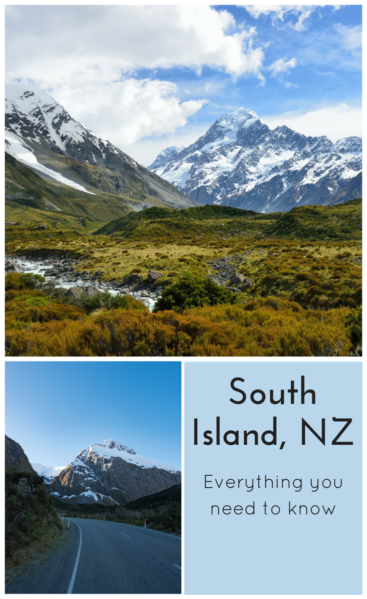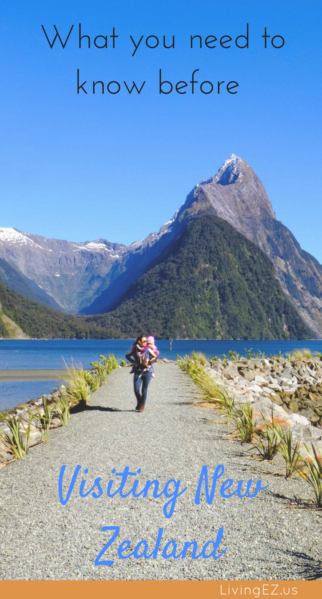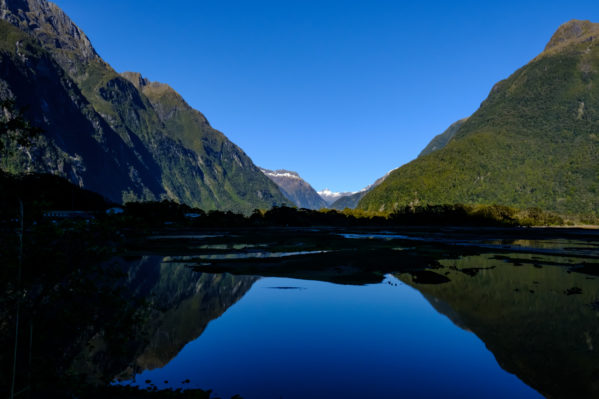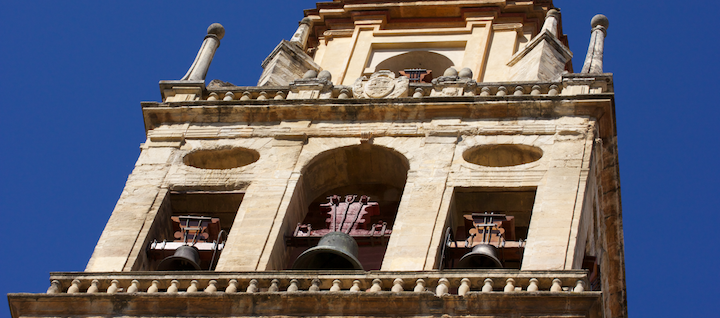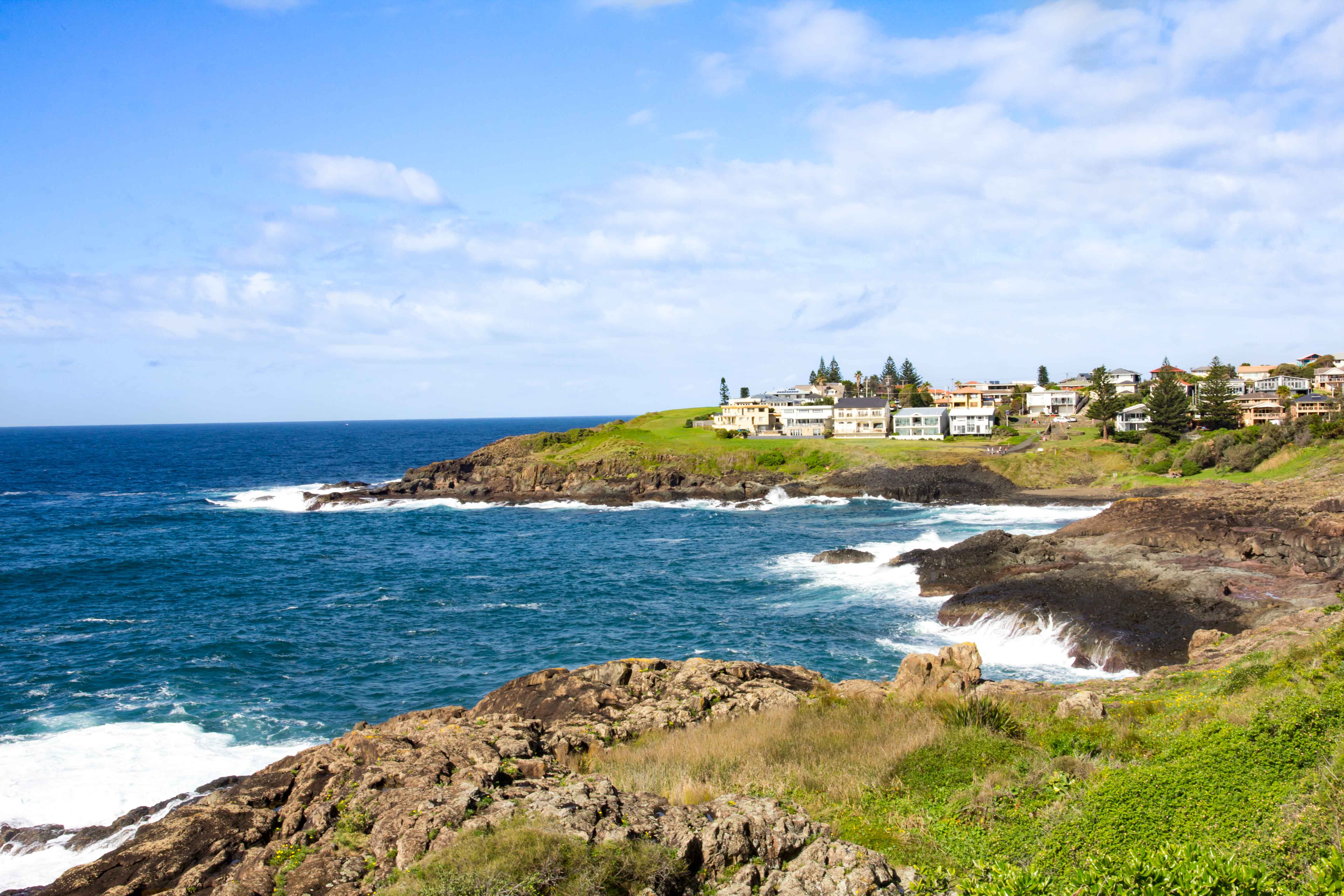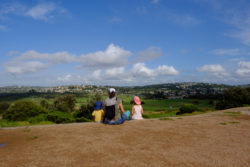Essential New Zealand Information (South Island Edition)
We love the anticipation of researching a new destination, and planning our next adventure. One of the exciting parts is that no amount of preparation covers what you learn by exploring. Here is a round-up of our key learnings, as Americans living in Australia, visiting New Zealand’s South Island for 10 days in a camper van.
Arrival – South Island
A Babycino is called a fluffy. Maybe that’s not first on everyone’s lists, but CZ does love her babycinos! Also, this was one of the first cultural differences on our first day in Christchurch.
 People are extremely friendly and surprisingly many of the travelers we encountered were New Zealanders. What a wonderful combination! These travelers shared heaps of good tips and local experiences. Fellow campers at our first holiday park turned us on to a good strategy of chasing the weather, which allowed us to experience the beauty of Milford Sound without rain.
People are extremely friendly and surprisingly many of the travelers we encountered were New Zealanders. What a wonderful combination! These travelers shared heaps of good tips and local experiences. Fellow campers at our first holiday park turned us on to a good strategy of chasing the weather, which allowed us to experience the beauty of Milford Sound without rain.
Customs – New Zealand aggressively combats the introduction and spread of foreign bacteria and plant life that may impact its pristine landscapes. Even at our midnight arrival, the dogs patrolled customs, and an agent casually inspected the tread on our hiking boots.
Packing – Despite warning from an acquaintance born and bred in NZ, I could have been better prepared. The weather in the South Island can change quite dramatically, and may even feel like all 4 seasons in a day. Make sure you read our weather info below, and do some research based on your trip time and locations. While it can be a little more expensive, you should be able to pick up any items you leave behind.
Geography – South Island
Size – The island looks smaller on a map than it feels driving around; partially because of the terrain and speed limits. The winding roads through the farms and fields have relatively low speed limits (generally 80 kmh / 50mph), and even increases to 100 kmh / 62mph might not feel comfortable in a camper van.
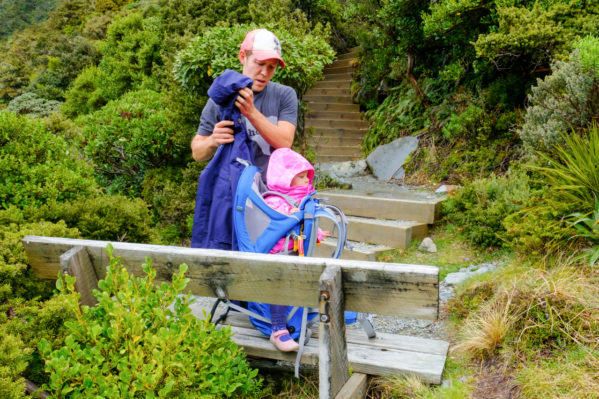
wearing short sleeves but bringing along a rain jacket, with CZ bundled in her coat
Weather – Despite the compact size, the weather is rather diverse across the island, and the high is often 10 degrees C higher than the low (a 20+ degree swing in Fahrenheit). In a camper van or a tent, this makes quite the difference. We travelled in October, and we required our diesel heater and doonas to get comfortably warm each evening. Additionally, the inland areas, such as Aoraki/Mt. Cook sometimes have radically different weather. There are occasional “weather bombs” as the NZ weather service calls them, and in the middle of summer the low can get down to -8 Celsius / 17 Farenheit. As a bonus though, you can chase the weather if your trip is long enough because it will generally be a clear day somewhere on the island.
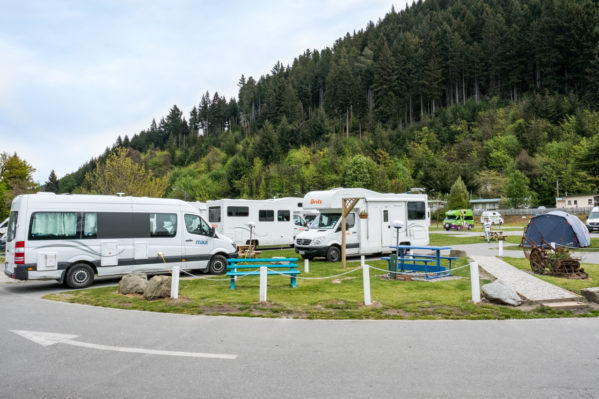
a packed caravan park in Queenstown
High Season vs. Shoulder Season – While the South Island lacks the fame of holiday spots like Bali, tourism significantly alters the experience you will have while traveling. We decided to visit during the shoulder season of October. There were noticeably more tourists at the back-end of our trip than during the start. Labour Day in NZ is the 4th Monday in October, which also increases the crowds.
As the crowds pick-up, you need to shift your day because some of the prime campsites don’t take bookings. This is especially important in places like Aoraki/Mt. Cook National Park, because camping is unreserved, limited, and breathtaking. One plus, is that you have an opportunity to make new friends. We had dinner with a family from China, and CZ was happy to have a playmate!
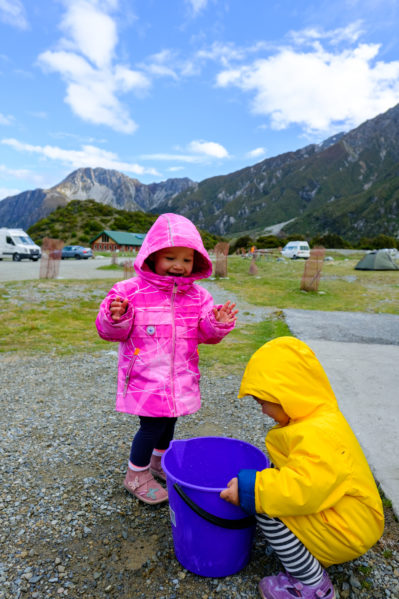 Sandflies – We read other travellers’ experiences with sandflies, so they did not totally surprise us. However, they are overwhelming and vicious in some areas! To combat them, we brought Moo Goo – which we highly recommend as a natural bug repellant. Fortunately, it was cool enough outside to cover up with long sleeves and jeans when we stand someplace with more sandflies. Also, the sandflies only seemed leave us alone while hiking. Romantic evenings sipping tea with the campervan doors open did not happen, but lots of hiking did!
Sandflies – We read other travellers’ experiences with sandflies, so they did not totally surprise us. However, they are overwhelming and vicious in some areas! To combat them, we brought Moo Goo – which we highly recommend as a natural bug repellant. Fortunately, it was cool enough outside to cover up with long sleeves and jeans when we stand someplace with more sandflies. Also, the sandflies only seemed leave us alone while hiking. Romantic evenings sipping tea with the campervan doors open did not happen, but lots of hiking did!
Also, be quick with the doors on our camper, and to not let them stay open, until you confirm minimal sandfly presence. For the ones that sneak through during camp setup, light attracts them. Drawing the curtains in the camper before sunset means it’s easy to squash them because they congregate on the windows! We may have made a bloodthirsty game of sandfly executions…
Essential New Zealand Information – Roads & Driving
Roads – The winding roads are generally one lane, and a bit narrow in spots. Passing trucks on the winding sections accounted for 85% of our driving stress, the other 15% came when Google maps led us on unsealed roads without warning (generally discouraged by rental companies). Overall, the roads are maintained and not terribly busy.
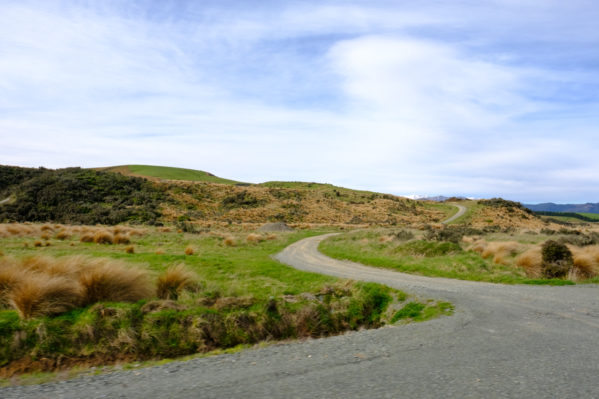
Driving is on the left-hand side of the road, which is well known, but a welcome reminder for EZ’s first left-hand driving experience. What really threw us were the bridge crossing signs with two arrows in opposite directions. One is larger than the other, and this indicates which direction across the bridge has the right away, and which side needs to stop. When you see this, the bridge is too narrow for multiple vehicles to pass.
The Homer Tunnel in Fiordland National Park is also a notable mention. The tunnel is part of the road down to Milford Sound, and quite impressive, at 1.2km. The tunnel is one way, and governed by traffic lights at the entrance, most of the day. However, the signals and lights inside the tunnel only operate during daylight hours, typically 9am – 5 pm, but a little longer during summer. There are passing bays in the tunnel, in the event you encounter another vehicle when the signals stop running. However, it is not wide enough for 2 camper vans to comfortably pass each other.
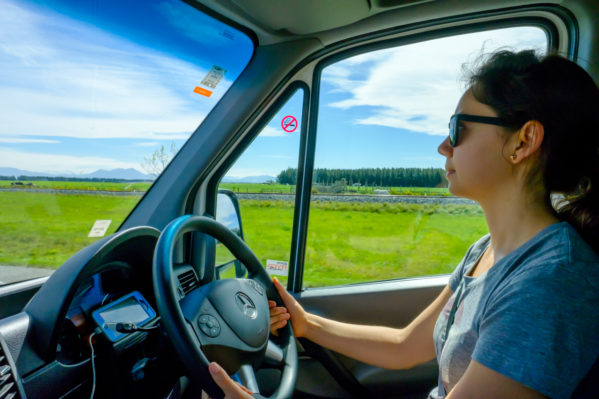 Mobile coverage is both impressive and sparse. We appreciated the luxury of free roaming with our Vodafone AU service, and had the opportunity to compare this to the mobile wifi option in our rental. Either they both had coverage, or neither had coverage. Overall, the internet is not the fastest, but manageable. Libraries and McDonald’s mostly all have free wifi, and of course many of the hotels offer it, as well.
Mobile coverage is both impressive and sparse. We appreciated the luxury of free roaming with our Vodafone AU service, and had the opportunity to compare this to the mobile wifi option in our rental. Either they both had coverage, or neither had coverage. Overall, the internet is not the fastest, but manageable. Libraries and McDonald’s mostly all have free wifi, and of course many of the hotels offer it, as well.
Google maps requires downloading for offline use. Unfortunately you must download the maps in chunks. If you play with the zoom in the download options, you can do in 8 or so overlapping chunks. This will provide coverage for the whole island, even if mobile phone reception disappears. It’s best to write down an address, or at least a city, for your next destination. Most cities have cell coverage, so the search will pick back up when you’re close. Offline maps do not currently include the restaurants and retail search capabilities.
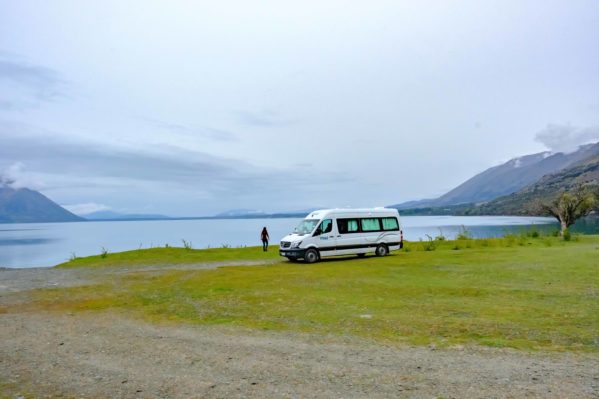
Stores / Gas / ATMs
Gas, groceries, and presumably shopping have 30-50% swings depending on location. The biggest place we noticed a hefty increase in prices was at Te Anau, the last stop before Milford Sound. There are no supplies past that point; as such, gas and food are noticeably more expensive. Queenstown is also a bit pricier. If you can, stock up before entering popular tourist destinations.
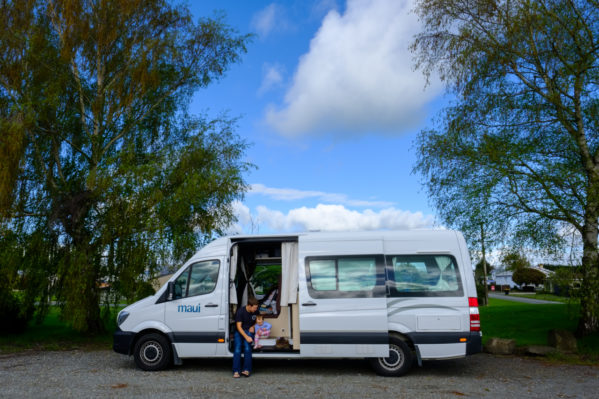
The Warehouse – Reminiscent of a standard Target or Walmart, not the super centers. They tend to have a pharmacy inside, and cover a fairly wide range of what you might need.
Pak ‘ N Save – Very cheap but more of a warehouse than supercentre, Picture pallets of stuff packed high on shelves with a random assortment of items. It did not have much in the way of food stuff, which was our main target.
Countdown – NZ version of the Aussie Woolworths
Mitre10 – Home Depot / Lowes
Gas is available in most towns, but definitely keep an eye on the tank and the nearest petrol. The more rural it feels when you fill up, the more expensive it will be. Larger cities with multiple gas stations will find you a better price. There is also a cheaper station in areas with a cluster of small towns.
